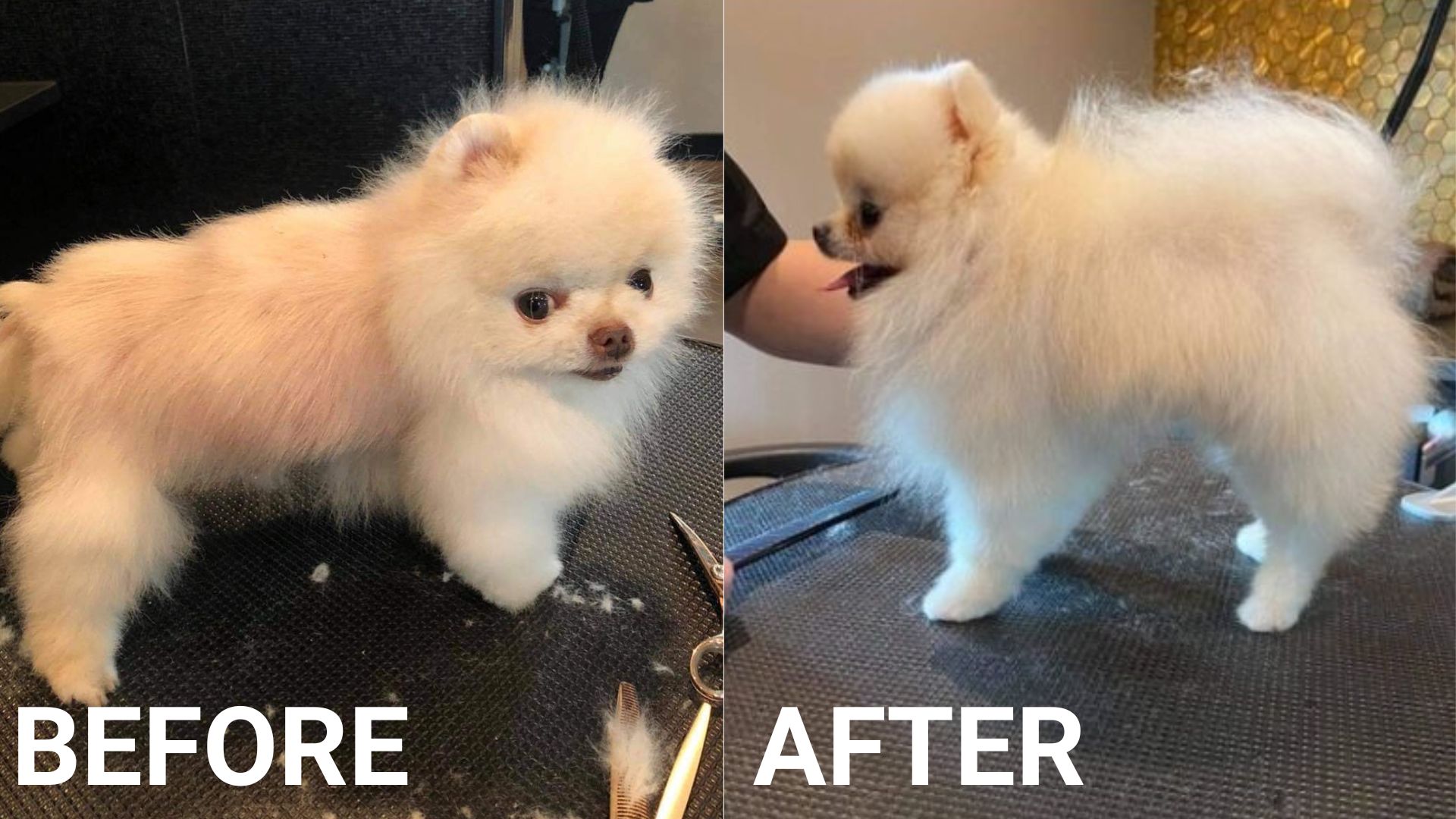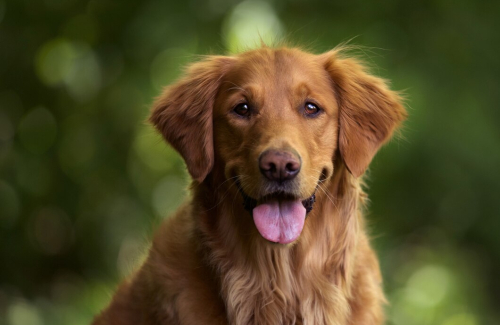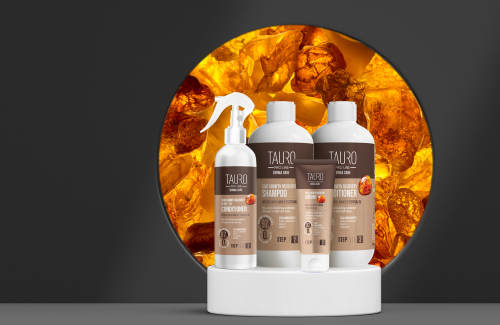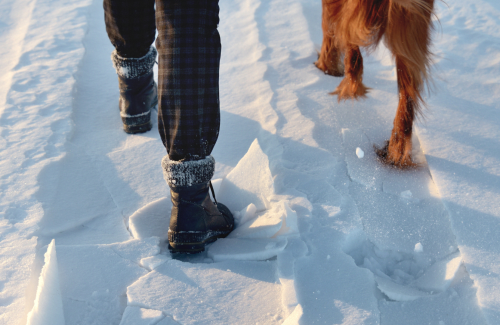Dogs with Alopecia: Your Care Guide
Alopecia in dogs refers to a medical condition where there is unusual hair loss or baldness. It occurs when the body's immune system mistakenly attacks the hair follicles, resulting in partial or complete hair loss on the body. This condition can cause bald patches that may appear symmetrically or randomly. It's important to note that alopecia can also affect humans.
While certain cases of hair loss in dogs can be temporary and get better with treatment, others may be permanent. Although the condition doesn't endanger the dog's life, it can make them feel uncomfortable and itchy.
Even though patches of baldness on the skin may not look pleasant, it's important to know that dogs can lead a normal life with or without all of their fur. Nevertheless, it is crucial to take care of any discomfort your pet may feel by seeking treatment to alleviate their itching.
Understanding the root causes of alopecia
There are various types of alopecia, and this condition can be caused by multiple factors, including:
- Genetic Susceptibility. Certain dog breeds, such as the Chinese Crested, Chihuahua, and Greyhound, exhibit a heightened predisposition to alopecia. It is important to note that genetics account for merely 2% of all alopecia cases, with environmental influences playing a more substantial role.
- Hormonal Imbalances: Hormonal disruptions, like hypothyroidism, can induce hair loss in dogs.
- Allergic Reactions: Dogs can experience hair loss due to allergies triggered by food, fleas, or environmental allergens.
- Dogs can experience hair loss due to infections caused by bacteria or fungi, affecting their skin or hair follicles.
- Parasitic Infestations: External parasites, such as mites, ticks, and lice, can provoke hair loss in dogs.
- Insufficient grooming practices, including irregular brushing, can lead to alopecia. This neglect allows dead hair to accumulate and obstruct hair follicles, impeding new hair growth and eventually resulting in hair loss.
- Hair loss in dogs can occur as a result of immune system disorders, like lupus and pemphigus, which affect the dog's ability to defend against diseases.
- Hair loss in dogs can be caused by inadequate nutrition or deficiencies in essential nutrients, like not getting enough important fatty acids.
- Similar to humans, dogs can experience hair loss as a result of stress and anxiety, which can have a negative impact on their overall health. Stressful situations like moving to a new place, alterations in daily routine, or the loss of a beloved companion can trigger hair loss in dogs.

Identifying the symptoms of alopecia
The manifestation of symptoms of alopecia in dogs can vary depending on the root cause. Several common signs to watch for include:
- Dogs with alopecia may experience either localized or widespread hair loss
- The skin may exhibit signs of redness or inflammation in dogs
- The skin may develop scabs or crusts in alopecia cases
- Dogs with alopecia may experience persistent itching or the tendency to scratch excessively
- Thickening or pigmentation changes in the skin
Alopecia diagnosis in dogs
If you think your dog has hair loss, it's important to bring them to the veterinarian for a diagnosis. The veterinarian will likely examine your dog's body and may suggest blood tests or skin scrapings to find out what's causing the hair loss.
Supporting dogs dealing with hair loss
The approach to treating hair loss (alopecia) in dogs varies depending on the root cause of the issue. Generally, prioritizing skin treatment is crucial as it aids in promoting hair regrowth. Here is a suggested recipe for skin treatment that I recommend:
- Initiate the treatment process by diligently combing through the dog's coat, as this action stimulates blood circulation within the skin and hair follicles.
- Proceed by preparing a mixture, tailored for dogs weighing up to 10 lbs., which incorporates the following components:
30 drops of Tauro Pro Line Elixir No.3
1 oz of warm water (98-100 °F)
1 oz of Tauro Pro Line Pure Mist alkaline water - Mix all the ingredients together until they form a smooth texture.
- Transfer the mixture into a spray bottle and apply it to the hair roots and skin, gently massaging it in.
- Cover your pet with cling wrap or place them in a plastic bag, making sure their head is out, and then wrap them snugly with a warm towel.
- Wash your pet using the Tauro Pro Line 3-Step bathing system. Apply the Tauro Pro Line Fur Growth shampoo, conditioner, and spray during the bathing process.
Perform this routine every 5-7 days over a span of 8 weeks. Once the skin has fully healed and transitioned to a light pink hue rather than black, grey, or brown, you may commence the process to stimulate hair regrowth:
- Diligently combing through the dog's coat, as tis action stimulated blood circulation within the skin and hair follicles.
- Proceed by preparing a mixture, tailored for dogs weighing up to 10 lbs., which incorporates the following components:
30 drops of Tauro Pro Line Elixir No. 4
1 oz of warm water (98-100 °F)
1 oz of Tauro Pro Line Pure Mist Alkaline water - Mix all ingredients together until they form a smooth texture.
- Transfer the mixture into a spray bottle and apply it to the hair roots and skin, gently massaging it in.
- Cover your pet with cling wrap or place them in a plastic bag, making sure their head is out, and then wrap them snugly with a warm towel.
- Wash your pet using the Tauro Pro Line 3-step bathing system. Apply the Tauro Pro Line Fur Pure Nature Fur Growth shampoo, conditioner, and spray during the bathing process.

Keep up with this process consistently every 5-7 days for a minimum of 8 additional weeks to observe noticeable results.
In instances where hair loss is attributed to hormonal imbalances, the veterinarian may propose hormone replacement therapy as a potential solution. In situations where allergies are the underlying cause, it may be essential to identify and eliminate the allergen from the dog's surroundings. For the treatment of parasite infestations, suitable medication like the MicroZeoGen detoxifying supplement can be administered.
In certain cases, dogs may not experience hair regrowth. Nonetheless, there are alternatives available, such as wigs or vests, that can shield the skin from sunburn or injuries. In severe instances, surgical intervention might be considered as a potential option.
Hair loss prevention techniques
While it's not always possible to completely prevent hair loss in dogs, there are actions you can take to lower the risk. Here are some simple steps you can follow:
- Consistent dog grooming: Regularly brushing your dog's fur, particularly during periods when their coat is changing, can assist in getting rid of loose hair and preventing the formation of mats and tangles, which can contribute to hair loss.
- Healthy nutrition: Providing your dog with a well-rounded and balanced diet that includes all the essential vitamins and minerals is crucial for maintaining their skin and coat health.
- Regular veterinarian visits: Taking your dog to the veterinarian for routine check-ups plays a vital role in detecting and addressing any potential health concerns before they worsen.
- Preventing parasites: Parasites like fleas, ticks, and mites can cause a range of health problems, including hair loss. Your veterinarian can suggest appropriate preventive measures, such as medications or topical treatments, to safeguard your dog's overall well-being and protect them from parasites.
Conclusion
Hair loss in dogs, known as alopecia, can be distressing for pet owners. However, with the right diagnosis and treatment, it is possible to manage the symptoms and even stimulate hair regrowth in certain cases. As an experienced dog breeder, I have witnessed many dogs successfully treated for alopecia. It's crucial to understand that identifying the underlying cause of alopecia is necessary before starting treatment. That's why it's vital to seek professional help if you suspect your dog has alopecia. A comprehensive examination, including physical assessment, blood tests, or skin scrapings, can help determine the reason behind the hair loss.
After identifying the root cause of alopecia, the treatment process can commence. Typically, this entails addressing any skin conditions or infections that might be contributing to hair loss. To achieve this, detoxifying supplements and coat care products that stimulate hair growth may be recommended.


 2023-08-23
2023-08-23




